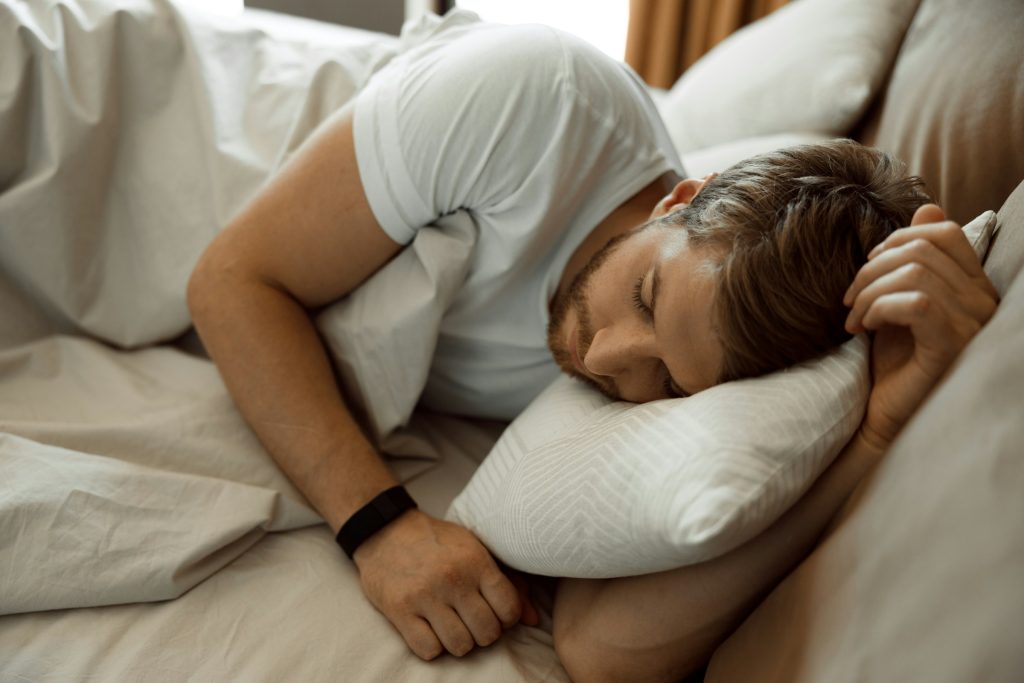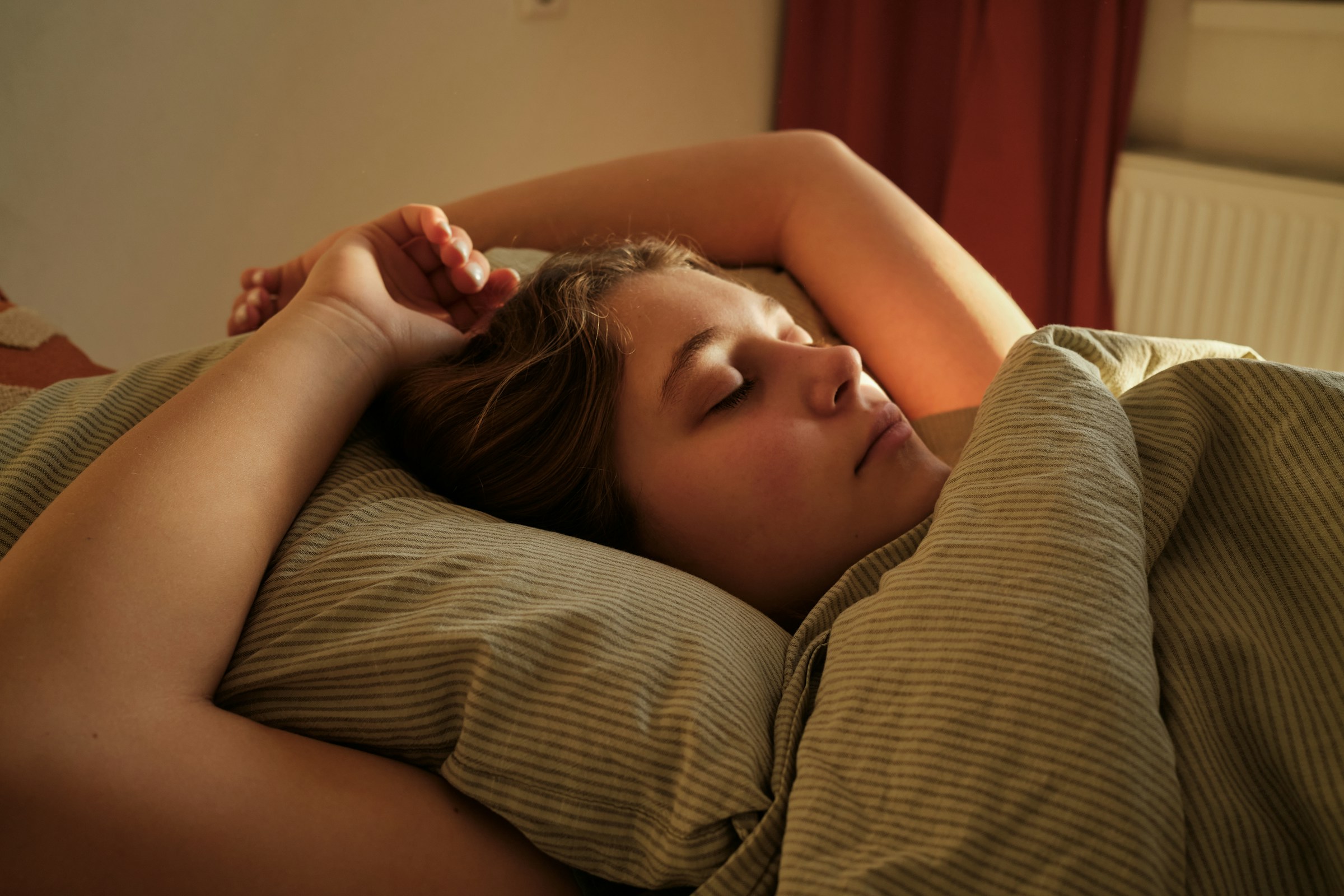Getting a good night’s sleep is essential for our overall health and well-being. However, for many Australians, sleep disorders such as insomnia, sleep apnea, and restless leg syndrome can make it difficult to achieve the recommended 7-9 hours of quality sleep each night. Fortunately, a new concept called “core sleep” may offer a solution for those struggling with sleep disorders.

What is Core Sleep?
Core sleep is the deep, restorative sleep that occurs during the first few hours of the night. Slow brain waves, relaxed muscles, and a decrease in heart rate and blood pressure characterize this type of sleep. During core sleep, the body repairs and regenerates tissues builds bone and muscle and strengthens the immune system.
According to Dr Michael Breus, a clinical psychologist and sleep specialist, “Core sleep is the most important part of the night because it’s when we get the majority of our deep, restorative sleep. If you’re not getting enough core sleep, you’re not going to feel rested or refreshed in the morning.”
How Can Core Sleep Help with Sleep Disorders?
Improves Sleep Quality
By concentrating on getting sufficient core sleep, you ensure your body receives the deep, restorative sleep needed to repair tissues, strengthen the immune system, and consolidate memories. Even if you don’t achieve a full 8 hours of sleep, prioritizing the first few hours can improve sleep quality overall.
Reduces Symptoms of Insomnia
Insomnia is a common sleep disorder characterized by difficulty falling asleep or staying asleep. Focusing on core sleep can help train your body to fall asleep more quickly and stay asleep longer. By establishing a consistent sleep schedule and creating a relaxing bedtime routine, you can signal to your body that it’s time to wind down and prepare for deep, restorative sleep.
Helps with Sleep Apnea
Sleep apnea is when breathing is repeatedly interrupted during sleep, leading to poor sleep quality and daytime fatigue. Getting enough core sleep can help reduce the severity of sleep apnea symptoms by ensuring that your body has sufficient time in the deep, restorative stages of sleep. Additionally, maintaining a healthy weight and avoiding alcohol and sedatives can further improve sleep apnea symptoms.
Alleviates Restless Leg Syndrome
Restless leg syndrome (RLS) is a neurological condition that causes an uncomfortable sensation in the legs, often leading to difficulty falling asleep. Prioritizing core sleep can help alleviate these symptoms and improve overall sleep quality. Engaging in regular exercise, managing stress, and maintaining a consistent sleep schedule can also help manage RLS symptoms.
To optimize core sleep and alleviate sleep disorder symptoms, experts recommend:
- Sticking to a consistent sleep schedule, even on weekends
- Creating a relaxing bedtime routine to signal to your body that it’s time to sleep
- Avoiding screens and bright lights for at least an hour before bedtime
- Keeping your bedroom dark, quiet, and cool to promote deep, restorative sleep
By focusing on getting enough core sleep and implementing these sleep hygiene practices, you can improve the quality of your sleep and alleviate symptoms associated with various sleep disorders. Suppose you continue to struggle with sleep despite these efforts. In that case, consulting with a healthcare professional or sleep specialist is important to rule out underlying health conditions and develop a personalized treatment plan.
Tips for Getting More Core Sleep and Improving Sleep Disorders
Stick to a Consistent Sleep Schedule
One of the most important things you can do to improve your sleep is to go to bed and wake up at the same time every day, even on weekends. It helps regulate your body’s internal clock, known as its circadian rhythm. When your circadian rhythm is in sync, your body naturally starts producing melatonin, the “sleep hormone”, in the evening as it gets dark.
It makes you feel tired and ready for bed. When it gets light in the morning, melatonin production stops, and you feel more alert and awake. But your circadian rhythm gets thrown off balance when you have an inconsistent sleep schedule. You may find it harder to fall asleep at night and wake up in the morning. Aim to establish a regular sleep schedule and stick to it as much as possible.
Create a Relaxing Bedtime Routine
What you do in the hour or so before bed can greatly impact how quickly you fall asleep and the quality of your sleep. Create a relaxing bedtime routine to help signal to your body that it’s time to wind down and prepare for sleep.
Some relaxing pre-bed activities include:
- Taking a warm bath: When you get out of the warm water, your core body temperature drops, which can help you feel drowsy.
- Reading a book can reduce stress by 68%. Just read from a physical book or e-reader rather than a tablet or phone, which emits sleep-disrupting blue light.
- Practising relaxation techniques: Deep breathing, progressive muscle relaxation, and meditation can help calm your mind and body before bed.
Avoid Screens Before Bed
In our technology-driven world, many of us are guilty of scrolling through our phones or binge-watching Netflix late into the night. However, the blue light emitted by electronic devices like phones, tablets, computers, and TVs can interfere with your natural sleep-wake cycle.
Blue light exposure suppresses your body’s melatonin production, making it harder to fall asleep. The mental stimulation from the content can also keep your brain buzzing into the night. As hard as it may be, try to avoid screens for at least an hour before bedtime.
If you must use a device, install an app that filters out the blue light or wear blue light-blocking glasses.
Make Your Bedroom a Sleep-Friendly Environment
Is your bedroom set up to promote good sleep? A few simple changes can make a big difference:
- Keep it dark: Darkness cues your body to produce melatonin. Use blackout curtains or an eye mask to block out any light.
- Keep it quiet: Noise can be disruptive to sleep. If you live in a noisy area, try using earplugs or a white noise machine to drown out external sounds.
- Keep it cool: The ideal bedroom temperature for sleep is around 60-67°F (15-19°C). Your body temperature needs to drop slightly to initiate sleep.
- Make it comfortable: Invest in a supportive mattress, pillows and bedding to create a cozy sleep environment you look forward to climbing into each night.
The Bottom Line
Getting enough core sleep is essential for managing sleep disorders and improving overall sleep quality. By prioritizing the first few hours of sleep and creating a sleep-friendly environment, you can get the deep, restorative sleep your body needs. If you’re struggling with a sleep disorder, talk to your doctor or a sleep specialist about additional strategies for improving your sleep.
Frequently Asked Questions:
How much core sleep do I need?
Aim for at least 3-4 hours of core sleep each night. It is the minimum amount needed to reap the therapeutic benefits of deep sleep.
What if I wake up during the night?
If you wake up during the night and can’t fall back asleep within 20-30 minutes, get out of bed and do a quiet activity like reading or listening to music until you feel sleepy again. Avoid screens and bright lights, as these can make it harder to fall back asleep.
Can I make up for lost core sleep on weekends?
While sleeping in on weekends is tempting to make up for lost sleep during the week, this can disrupt your sleep schedule and make it harder to fall asleep at night. Try to stick to a consistent sleep schedule, even on weekends.

